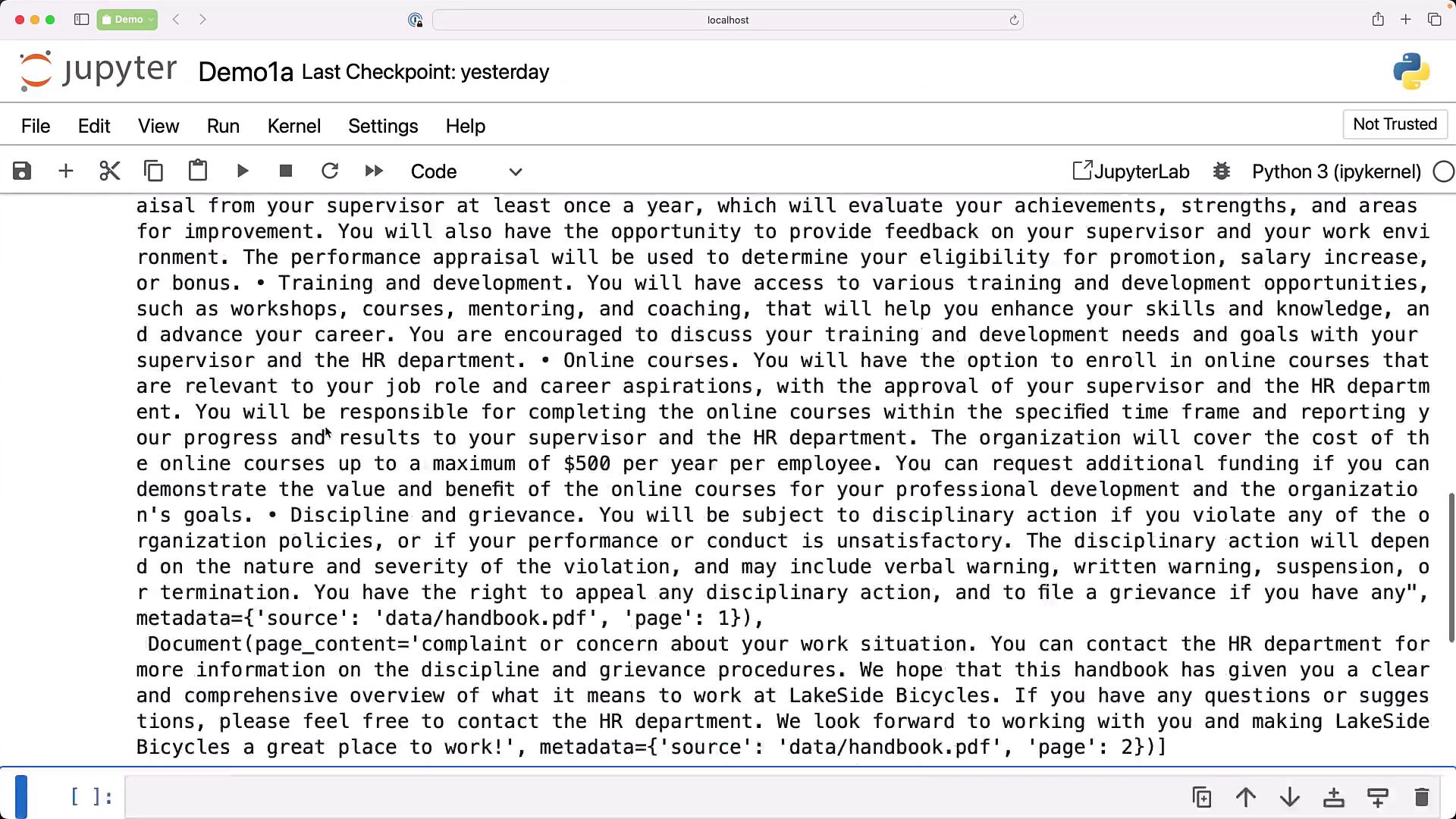LangChain
Performing Retrieval
Loading PDFs
In this lesson, we'll walk through loading and splitting a PDF document—an employee handbook for Lakeside Bicycles—using LangChain’s PyPDFLoader. This process is a common first step in a Retrieval-Augmented Generation (RAG) pipeline, enabling your Q&A application to fetch answers directly from document content.
Prerequisites
Before you begin, ensure you have the following:
| Requirement | Install Command |
|---|---|
| Python 3.7+ | — |
| langchain | pip install langchain |
| langchain-community | pip install langchain-community |
Note
You can install both packages at once:
pip install langchain langchain-community
1. Import the PDF Loader
Start by importing PyPDFLoader from the community loaders:
from langchain_community.document_loaders import PyPDFLoader
2. Initialize the Loader
Point the loader at your PDF file (e.g., data/handbook.pdf):
loader = PyPDFLoader("data/handbook.pdf")
Warning
Make sure the file path is correct and the PDF is not password-protected. Otherwise, the loader will raise an error.
3. Load and Split into Pages
Use the load_and_split() method to read the PDF and split it by page:
pages = loader.load_and_split()
4. Verify the Page Count
Confirm you have the expected number of pages:
print(len(pages))
# Output: 3

The output confirms three pages. You can inspect any page’s content by indexing into pages:
print(pages[1].page_content)
Next Steps
With your PDF now loaded and split, you can:
- Embed page texts for semantic search
- Build a vector store for similarity matching
- Hook into a chat interface for RAG-powered Q&A
Links and References
Watch Video
Watch video content